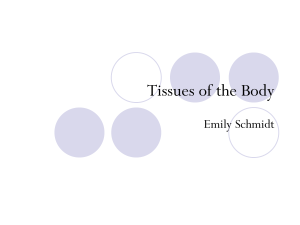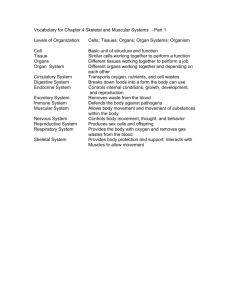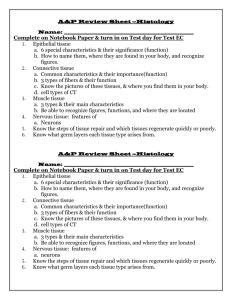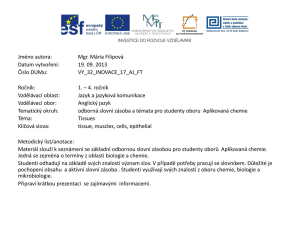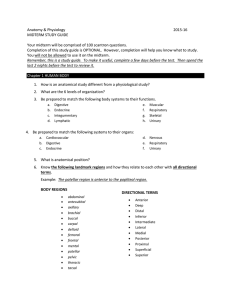A-is-for-Anatomy-Study-Guide
advertisement
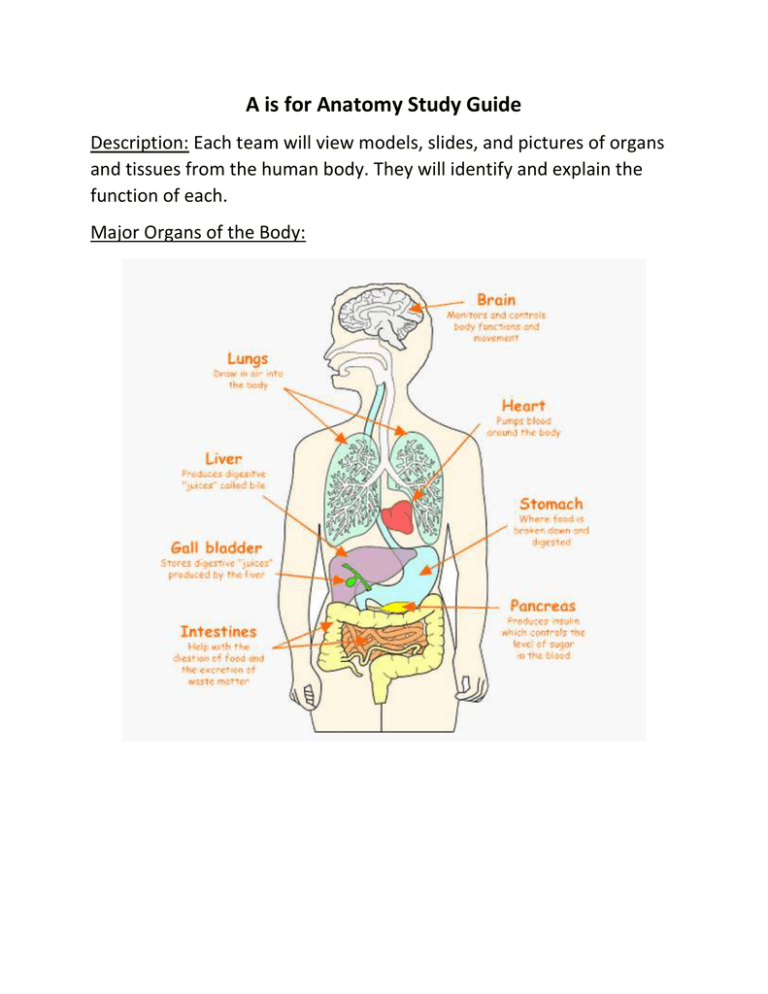
A is for Anatomy Study Guide Description: Each team will view models, slides, and pictures of organs and tissues from the human body. They will identify and explain the function of each. Major Organs of the Body: 4 Types of Tissues: A tissue is a group of cells that have a similar shape and function. Different types of tissues can be found in different organs. In humans, there are four basic types of tissue: epithelial, connective, muscular, and nervous tissue. In tissues the simplest combination is called a membrane, or a sheet of tissues which cover or line the body surface or divide organs into parts. Examples include the mucous membrane which lines body cavities. Tissues combine to form organs. An organ is a part of the body which performs a definite function. The final units of organization in the body are called systems. A system is a group of organs each of which contributes its share to the function of the body as a whole. Epithelial tissue covers the body surface and forms the lining for most internal cavities. The major function of epithelial tissue includes protection, secretion, absorption, and filtration. The skin is an organ made up of epithelial tissue which protects the body from dirt, dust, bacteria and other microbes that may be harmful. Cells of the epithelial tissue have different shapes as shown on the student's worksheet. Cells can be thin, flat to cubic to elongated. Connective tissue is the most abundant and the most widely distributed of the tissues. Connective tissues perform a variety of functions including support and protection. The following tissues are found in the human body, ordinary loose connective tissue, fat tissue, dense fibrous tissue, cartilage, bone, blood, and lymph, which are all considered connective tissue. muscle tissue: Three types skeletal, smooth, and cardiac. Skeletal muscle is a voluntary type of muscle tissue that is used in the contraction of skeletal parts. Smooth muscle is found in the walls of internal organs and blood vessels. It is an involuntary type. The cardiac muscle is found only in the walls of the heart and is involuntary in nature. Nerve tissue is composed of specialized cells which not only receive stimuli but also conduct impulses to and from all parts of the body. Nerve cells or neurons are long and string-like. Below is a list of websites to use for research and additional practice. http://www.kidsbiology.com/human_biology/index.php http://www.turtlediary.com/grade-2-games/science-games/humanbody.html http://studyjams.scholastic.com/studyjams/jams/science/humanbody/human-body.htm http://kidshealth.org/kid/htbw/





